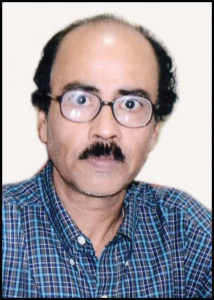Insurance companies around the globe have worked diligently since the global financial crisis, to reduce operational costs, and improve effectiveness. Their initiatives are now paying dividends, but market conditions remain tough, with few insurers able to raise rates as their dire need, as they would like, and investment income is still lagging.
Insurers are nevertheless turning their attention to boosting revenues, and reducing acquisition costs-an expense that has remained stubbornly high revenue growth – depends heavily on keeping existing customers and attracting new ones, preferably by utilizing low-cost direct-sales channels (through internet and mobile), which reduce the need for costly intermediaries. But direct distribution networks and channels (as the access points) are not just a boon for insurers; they are increasingly on the must-have list for insurance customers-who expect the same anytime/anywhere/any device service to which they are accustomed in other areas of their lives.
The marketing channel and other preferences of insurance customers by analyzing data from the available resources that were developed to provide the granular views of how customers perceive the quality of their service interactions across three dimensions: products, networks/channels, and customer lifecycle. The data they have captured through the voice of the Customer Survey, which queried more than 12000 customers during 2018 (specially belonging to the northern & western sectors of the country) on their general satisfaction with their insurer, and also inquired more specifically about the importance of specific channels for executing different types of transactions, and for different types of products.
India’s this deregulated market of non-life insurance industry is invariably in a nascent stage compared to the other countries. Insurance penetration and per capita premiums – both are still very low, except for compulsory third-party motor insurance. However, privately held insurers are increasingly penetrating in the health insurance sector – some of them are only focusing to that sector being the stand-alone health insurer. The claims ratio of the Indian non-life industry have already increased heavily – primarily driven by increased provisioning requirements in the motor third-party liability segment.
The overall claims ratios for motor and health insurance (being the bread-earners for the insurers) have crossed the mark of 100% long back during fiscal 2010-11, mainly due to inflation-related increases in claims expenses, such as the rising cost of spare parts and medical treatments respectively. The inefficient underwriting practices in the industry also contribute significantly to the high claims rates. For example, almost less than 4% of claims were rejected by non-life industry in the last fiscal.
The operational expense ratio of the Indian non-life industry deteriorated further despite already being the highest globally. This deterioration was evident among both public and private insurers. Operational expenses increased as insurance players continued to invest in the expansion of their business and to compete absolutely being in a severe cut-throat competition with the international players in this market.
India’s Insurance Regulatory and Development Authority of India (IRDAI) had contemplated an increase in the limit on foreign direct investment in insurers to 49% long back about almost ten years ago. If global players acquire larger stakes in domestic operations, it could lead to more widespread adoption of best practices, and resultant operational efficiencies in the long run. The acquisition ratio of India’s non-life insurers declined as new and low-cost distribution channels emerged, especially among private-sector providers, where acquisition costs are lower than amongst public insurers.
Investment ratios- the return on insurers’ investment portfolios – are mostly declined heavily. Since the financial crisis, insurers have been more conservative in their investments amidst ongoing uncertainty in world markets and weaknesses in macroeconomic conditions. The European debt crisis injected further volatility into financial markets. As a result of market and economic uncertainty, insurers have generally become more heavily invested in fixed-income securities and bonds, despite the prevailing low interest yields, and have far less exposure to equities than before the crisis. This approach keeps returns low, and limits insurers’ exposure to the upside of equities gains, but it is likely to remain the favored stance for some time.
Profit margins for non-life insurers declined broadly since de-tariffing, despite efforts to improve operational efficiency, because gains in underwriting performance were not sufficient to offset declining investment returns.
All non-life insurers are focused on reducing operational costs and raising effectiveness, but market-specific conditions continue to be the single most important factor. With investment income likely to be limited for the foreseeable future, and many insurers already trying to make routine activities as efficient as possible, business acquisition costs are likely to be the next target for non-life insurers seeking to improve their profitability. Agents and brokers remain prevalent in most of the markets, so any significant reduction in acquisition costs is likely to emerge only as the use of direct channels becomes more prevalent in India.
Global Efficiency-Ratio Model shows Indian Non -Life Claims Ratios were drastically hit hard by Catastrophe Claims for the last decade: To analyze the specifics of performance, insurers used the Efficiency Ratio Model to calculate efficiency ratios [expense and profit metrics against gross written premiums (GWP)] for major players in each market, and to analyze broad industry performance trends by market accordingly.
The operational ratio in some companies improved, albeit very slightly, as insurers continued to invest in productivity improvements despite rising claim levels, and are starting to see the benefits of productivity investments. Insurers had been slow to make such investments as they faced significant competitive pressure and very low profits. However, investment became necessary as existing systems were aging, and needed to be overhauled or replaced. System upgrades have led to efficiencies, but the industry is still only part of the way through the updating process.
Acquisition ratios are changing very little with only a fraction of customers using direct distribution networks. However, insurers are undertaking widespread efforts to increase the use of direct distribution networks, and customers are beginning to opt for new and alternative channels, such as Internet and mobile. This is helping insurers to increase their reach, and enhance customer satisfaction, but distribution costs often remain high.
The U.K. Market, which had given the non-life market all the insurance types and products initializations. To start with the basic initiation of thinking on “Fire Insurance” after the ‘Great London Market Fire’ during the period of four days starting from 2nd continued up to 5th September, 1666. The first Motor Policy was introduced for the first time globally in England during 1895 to cover Third Party Liability and subsequently, the Comprehensive Policy of Motor Policy entered into the non-life market (i.e. additionally covering Own Damage (OD) Section along with Third Party Cover) was introduced there in 1899.
As the insurance world’s history reveals that all though the Marine Policy was recorded to be in existence around four hundred years before The Birth of Christ (BC) but surely the modern ‘Commercial Indemnity’ concept based “Marine Policy” as exiting now in the global market was planned only during 1779, in a coffee house of London. We also know that all Miscellaneous Line of Business (LOB) products in non-life insurance sector came one after another, in seriatim, in England only after the passing the Fatal Accidents Act, during 1855 – in the Parliament there in England.
But now if we look at this current U.K. Market – What we find now there? – It has become the highest acquisition ratio in the world at present (as evident from the recent studied reports, despite widespread promotion of direct channels, because there the market is very well developed and highly competitive. As the result, the cost of acquiring new business has also become high, since commissions still represent a large, integral distribution expense therein, and the cost of competing for business through advertising and aggregation websites is found to be high enough.
The acquisition ratio rose, for instance, the ratio is deteriorated primarily due to the continuing dominance of intermediaries (agents and brokers) in non-life distribution, and the same situation is also exists in India. Nevertheless, direct distribution method is generally and gradually increasing, and insurers can expect to realize benefits from their these kinds of investments in the direct channels as and when this usage expands to a significant level.
Non-life insurers have generally been vigilant in recent years in managing their routine operations. While some have faced very high but unavoidable catastrophic losses, others have made good progress in containing and even reducing operational costs. Not all insurers have invested as much as in improvements as they might have-often because they operate either in this highly competitive non-life markets in which price competition reduces margins or in this still nascent markets like India, where the focus is on growing market share and revenues. It also tends to be more costly to acquire new businesses, in these highly competitive or fast-growing new markets, but in almost every market, acquisition costs are one piece of the expense ledger that is especially difficult to reduce.
The acquisition ratio is a proxy for the effectiveness with which distribution networks are being managed, but when the bulk of distribution is weighted heavily toward high-cost intermediaries (agents and brokers); insurers will need to transform the nature of the business itself to reduce these costs.
Strong customer acquisition and retention rates will be critical for sustainable growth for most the non-life insurers, especially with ongoing pressure on reduction in premiums to sustain in this highly competitetive Indian non-life insurance market. Here, the Insurers will therefore need to understand exactly what resonates with their customers, what encourages the clients to stay in their insurers’ book on long-term basis, and what could encourage them to defect. Moreover, insurers will need to look beyond customers’ satisfaction with individual products and services, and make sure they are vigilant about the entire customer experience in the market. This will mean making sure customers’ specific needs are being met, in the way and at the time they prefer, across the lifecycle of this insurance relationship.
Reference:
References have been taken from the contemporary circulations & reports / current discussions as read (in hard form in several articles & also in soft forms as available in web-sites).
Authored By:

B.M.E. (Honours), F.I.I.I., Risk Inspecting Engineer & Insurance Counselor, Retired Chief Manager, H.O., National Insurance Co. Ltd., Kolkata.


